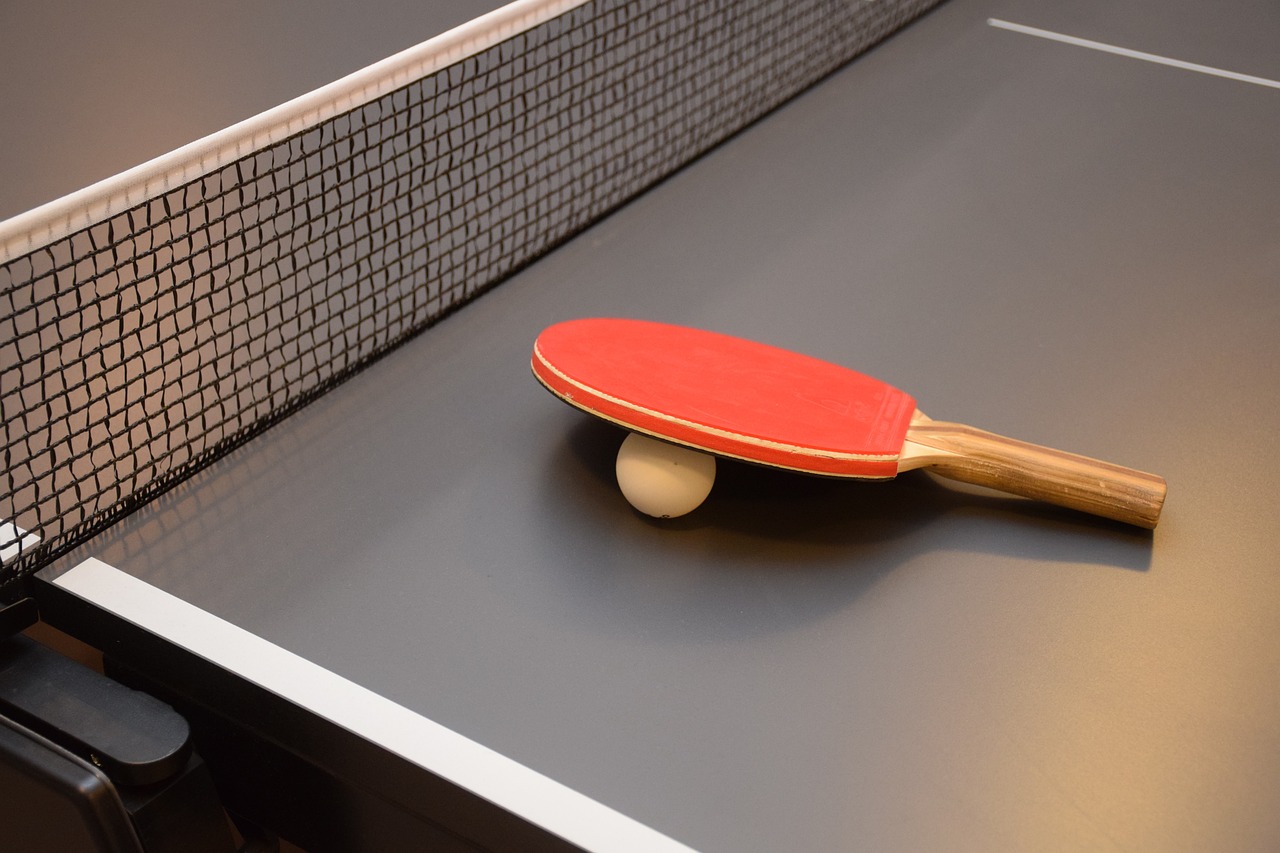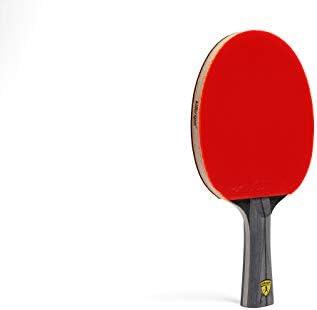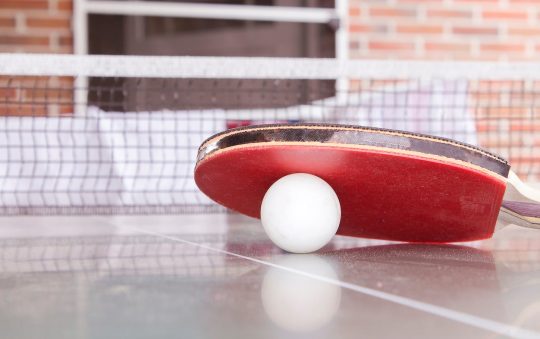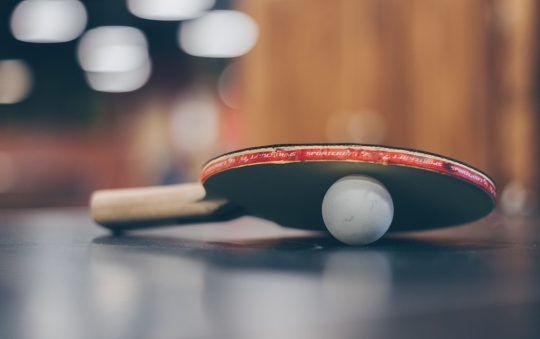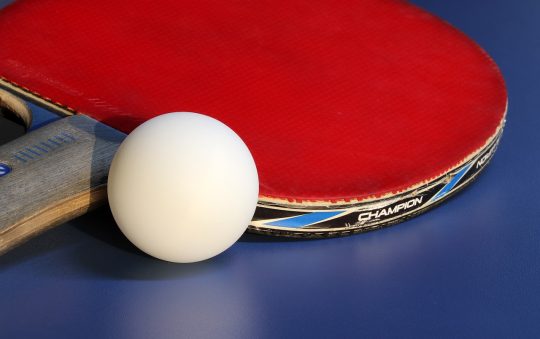Owning multiple ping pong paddles allows enthusiasts to tailor their equipment to various playing styles and situations. Each paddle has its own unique characteristics such as grip, blade composition, sponge thickness, and rubber quality. These factors significantly affect spin, speed, and control. By having a selection, players can choose a paddle that complements their technique, whether they prefer offensive play with fast loops or defensive strategies that rely on precise ball placement.
Paddle variety also becomes important when facing different opponents. A player may switch paddles to counteract an opponent’s strengths or to exploit their weaknesses. For instance, using a paddle with more control can be advantageous against an aggressive player, allowing for better block and chop returns. Conversely, a faster paddle might be selected to apply pressure against a defensive player.
Moreover, conditions such as temperature and humidity can alter how a paddle performs. Players who compete in various environments may benefit from having paddles suited to different conditions. High humidity can make a paddle more tacky, affecting spin and speed, while cooler temperatures can make rubber harder and less responsive. With multiple paddles at their disposal, players can ensure optimal performance regardless of climate variations.
Benefits of Multiple Paddles
Owning multiple ping pong paddles offers several advantages for players of all levels. Here are key benefits:
- Personal Adaptation: Players may adapt better to different playing styles and strategies by switching among paddles with varying surface rubber, thickness, and stiffness.
- Equipment Longevity: Alternating between paddles can extend the life of each, as wear and tear are distributed among multiple pieces of equipment.
- Consistency and Performance: Players can maintain a consistent playing standard by using a backup paddle similar to their primary if it becomes damaged during a match.
- Tactical Advantage: Having a selection of paddles allows players to choose equipment based on their opponent’s weaknesses and the playing conditions of each match.
- Skill Development: Using various paddles can aid players in developing a wider range of skills and techniques, as different paddles emphasize different aspects of play.
- Hygiene: With multiple paddles, players can allow each one ample time to dry and air out, reducing the risk of bacteria buildup and maintaining better grip performance.
Below is a formatted table outlining these benefits:
| Benefit | Description |
|---|---|
| Personal Adaptation | Enables better adjustment to varied styles and strategies. |
| Equipment Longevity | Distributes usage, extending paddle lifespan. |
| Consistency and Performance | Ensures steady play with backup options. |
| Tactical Advantage | Matches paddle choice to opponents and conditions. |
| Skill Development | Encourages a broader skill set through diverse equipment. |
| Hygiene | Limits bacteria and improves grip by rotating paddles. |
Considerations for Paddle Variety
When players invest in multiple paddles for ping pong, they consider various factors that affect gameplay. The primary considerations include different playing styles, skill progression, and playing surfaces.
Playing Styles: Players often develop distinct playing styles over time, varying from defensive to offensive, close-table to long-range. Owning multiple paddles allows players to choose a paddle that complements their style for any given match.
- Defensive players might prefer paddles with higher control ratings.
- Offensive players might select paddles that offer greater speed and spin.
Skill Progression: As players improve, their equipment needs evolve. Beginners might start with basic paddles and advance to custom options with specialized rubbers and blades as they develop their skills.
| Skill Level | Suggested Paddle Characteristics |
|---|---|
| Beginner | Increased control and durability |
| Intermediate | Balanced performance attributes |
| Advanced | High speed and spin potential |
Playing Surfaces: The table surface can influence the game. Players may opt for different paddle rubbers to adjust to the varying speed and bounce of the ball depending on the surface. For example, a harder rubber might be used for slower tables to maintain offensive play.
Moreover, environmental conditions like humidity and temperature can alter a paddle’s performance. Having a variety allows players to switch paddles to maintain their game’s consistency.
In essence, a variety of paddles enables players to adapt to different scenarios, maximize their potential, and ensure they are prepared for competitive play.
Impact on Skill Development
Owning multiple paddles can significantly impact a player’s development in ping pong. Variety in Weight and Balance: Different paddles have varying weights and balances, which can train a player’s wrist and arm to adapt to different playing styles. This enhances muscle memory and flexibility.
- Light Paddle: Improves speed and reaction time.
- Heavy Paddle: Builds strength and power in strokes.
Surface Texture Variation: The rubber surface of ping pong paddles determines the spin and speed of the ball. Players can develop their ability to control and counter different spins by practicing with multiple types of rubber textures.
- Smooth Rubber: Suits an offensive playstyle, with faster strokes.
- Pimpled Rubber: Benefits defensive strategies, allowing for unique spin variations.
Grip Training: Paddles come with various handle types which can affect grip technique.
- Flared Handle: For a more secure grip, suitable for aggressive play.
- Straight Handle: Allows for more wrist movement, favoring defensive play.
Adaptability: Using different paddles helps players become versatile and quickly switch tactics based on the opponent’s weaknesses.
Tactical Awareness: Mastering various paddles enhances a player’s tactical understanding of the game, reinforcing the ability to exploit the paddle’s properties in match scenarios.
By training with a range of equipment, a player can develop a well-rounded skill set. This prepares them for the unpredictability of competitions, where opponents may have varying equipment and styles.
Paddle Maintenance and Longevity
Proper care of ping pong paddles can significantly extend their lifespan. Different materials and coatings on paddles necessitate specific maintenance routines to keep them in optimal condition.
- Storage: Paddles should be stored in a dry, cool place away from direct sunlight to prevent warping and delamination. Use a paddle case to protect the rubber from dust and oxidation.
- Cleaning: After each use, paddle surfaces require cleaning to remove oils, sweat, and dust. Players should gently wipe the rubber with a soft, damp sponge or use a specialized paddle cleaner. This not only maintains the grip but also prevents the deterioration of rubber properties.
- Rotation: Owning multiple paddles allows players to rotate their usage. This rotation can reduce the wear and tear on a single paddle from continuous play, thereby prolonging its performance life.
- Rubber Replacement: Over time, the rubber loses its tackiness and elasticity. Regular players should monitor the rubber’s condition and replace it when necessary — typically every six to twelve months, depending on usage.
Handling: Paddles should be handled with care. Avoid dropping or hitting them against hard surfaces, as this may cause the wood to crack or the rubber to peel.
Players should follow the manufacturer’s instructions for specific care and maintenance advice. By adhering to these practices, players can ensure their paddles maintain performance and last longer.
Psychological Factors
Having multiple ping pong paddles can have significant psychological benefits for players, influencing their confidence and mental approach to the game.
- Personal Attachment: Players often develop a bond with their equipment. A paddle that “feels right” can boost a player’s emotional state, thereby positively affecting performance.
- Adaptability: Possessing a variety of paddles allows players to adjust their strategy based on the opponent’s playing style. This flexibility can provide a mental edge, as players feel prepared for any challenge.
- Comfort Level: Each paddle has its unique characteristics. Familiarity with different types allows a player to choose the paddle that best suits their mood or mental state on a given day.
Players may also experience less anxiety about equipment failure when they have multiple paddles. Knowing there are backups available can reduce stress and allow players to focus on their game.
Lastly, the act of choosing a paddle can serve as a mental warm-up, getting players into the right mindset for competition. This ritual can be an important part of a player’s psychological preparation, setting the stage for a focused and confident performance.
Social and Competitive Aspects
Owning multiple ping pong paddles can greatly influence social interactions and competitive play. When players engage with others, they often encounter a variety of playing styles. Having a selection of paddles allows a player to host games and adapt to different opponents. This adaptability fosters a welcoming environment and enhances the social experience.
Social Play
- Adaptability: Different guests may prefer different paddle types; having a variety caters to this need.
- Inclusivity: Offering a paddle that suits a guest’s skill level or playing style can make the game more enjoyable for everyone involved.
Competitive Play
- Tactical Advantage: For those in competitive settings, the right paddle can give an edge against specific opponents.
- Preparedness: Multiple paddles ensure a backup in case of wear or sudden damage during a match.
Players also show their commitment to the sport and respect for the game by having professional equipment. This level of preparedness is not only practical but also conveys seriousness and a dedication to improvement. Enhanced equipment options can lead to improved personal performance and a more engaging game for participants and spectators alike.
